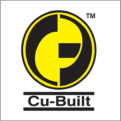Precision is the cornerstone of modern fabrication and welding industries. Whether it’s aligning heavy workpieces or ensuring accurate rotation during welding, a reliable Headstock Tailstock Positioning System plays a pivotal role in delivering high-quality output.
Designed to support and rotate long or heavy components during fabrication, this positioning system not only improves efficiency but also enhances safety and repeatability. In today’s competitive manufacturing landscape, companies are constantly seeking ways to streamline operations—and this equipment offers a significant step forward.
What Is a Headstock Tailstock Positioning System?
A Headstock Tailstock Positioning System is a synchronized mechanical setup typically used in welding, machining, and assembly applications. The headstock serves as the drive unit providing rotational motion, while the tailstock supports the other end of the workpiece to maintain balance and stability.
Together, they enable precise rotation and secure positioning of large or complex parts, especially cylindrical or tubular components. These systems are essential when handling long shafts, pipes, beams, or tanks that need consistent alignment throughout fabrication.
Key Benefits of Using Headstock Tailstock Positioners
1. Enhanced Accuracy and Repeatability
Accurate positioning leads to uniform welds, fewer reworks, and consistent product quality. Automation reduces human error and ensures repeatable outcomes.
2. Improved Operator Safety
Manually rotating large workpieces can be dangerous. These systems handle the heavy lifting, reducing strain and injury risk for operators.
3. Support for Large and Heavy Workpieces
Workpieces weighing several tons can be safely handled with headstock-tailstock setups, making them ideal for heavy industries like shipbuilding and energy.
4. Optimized Welding Positioning
Proper orientation of the part is critical for weld integrity. This system allows tilting or rotating the workpiece into the best position for welding.
5. Increased Productivity
With smoother rotations and precise control, fabrication cycles become faster. Automation reduces downtime between processes and manual adjustments.
Where Is It Used?
The Headstock Tailstock Positioning System is widely adopted in a range of industries due to its flexibility and strength. Common application areas include:
-
Oil & Gas Fabrication: For pipe welding and pressure vessels.
-
Aerospace: Precision positioning of aircraft components.
-
Heavy Machinery Manufacturing: Handling and welding of large frames or chassis.
-
Shipbuilding: Rotating large structural sections for accessibility.
-
Automotive: Alignment and welding of axles, engine parts, and frames.
Components of the System
Understanding the core components of a headstock-tailstock system helps in selecting and customizing the right setup for your specific needs:
-
Headstock Unit: Houses the drive motor and controls rotation. Can be fixed or adjustable speed.
-
Tailstock Unit: Provides support and is usually free-spinning. Often height-adjustable to match the headstock.
-
Base Frame or Rail System: For alignment, height adjustment, and stability.
-
Control Panel: Allows operators to set rotation speed, direction, and tilt (if applicable).
-
Chucks or Fixtures: To secure the workpiece properly during rotation.
Choosing the Right System
Before investing in a Headstock Tailstock Positioning System, consider the following factors:
➤ Load Capacity
Ensure the system can support the full weight of your workpiece without compromising safety or performance.
➤ Workpiece Length
The distance between headstock and tailstock must accommodate your longest component.
➤ Rotation Speed and Control
Variable-speed options are useful for handling different materials and weld requirements.
➤ Integration
Some systems can be integrated with robotic arms or automated welding machines for a fully automated workflow.
➤ Durability and Maintenance
Heavy-duty construction and ease of maintenance ensure long-term usability and fewer disruptions.
Why Automation with Positioning Matters
As manufacturing trends lean heavily toward automation, positioning systems like these are becoming essential. Automating the rotation and placement of parts not only reduces human error but also enables seamless coordination with robotic welders and CNC machines.
Moreover, in industries where weld quality is tied directly to structural integrity, precise positioning reduces distortion and improves penetration—both key to meeting quality certifications and compliance standards.
Maintenance Tips for Longevity
To ensure that your positioning system continues to perform at peak efficiency:
-
Regularly lubricate moving parts
-
Check electrical connections for wear
-
Inspect fixtures for secure grip
-
Calibrate rotation and speed settings periodically
-
Train operators on safe usage and troubleshooting
Cost vs. Value
While a Headstock Tailstock Positioning System requires a higher upfront investment, the long-term value in terms of productivity, quality, and reduced labor costs far outweighs the initial price. These systems often pay for themselves within months in high-volume operations by minimizing rework and increasing output.
Final Thoughts
In conclusion, if your business involves the welding, fabrication, or machining of long or heavy components, investing in a Headstock Tailstock Positioning System can significantly elevate your operational capabilities. It not only improves alignment and quality but also supports your transition toward a safer, more automated, and efficient workspace.
By integrating this solution into your production line, you’re positioning your business for future-ready manufacturing standards and better bottom-line results.

